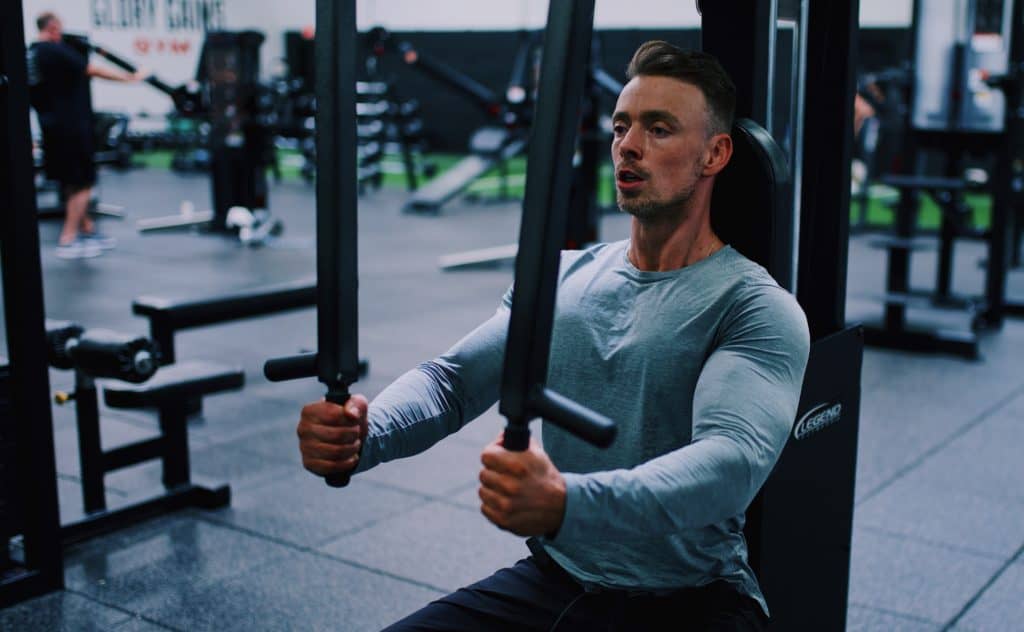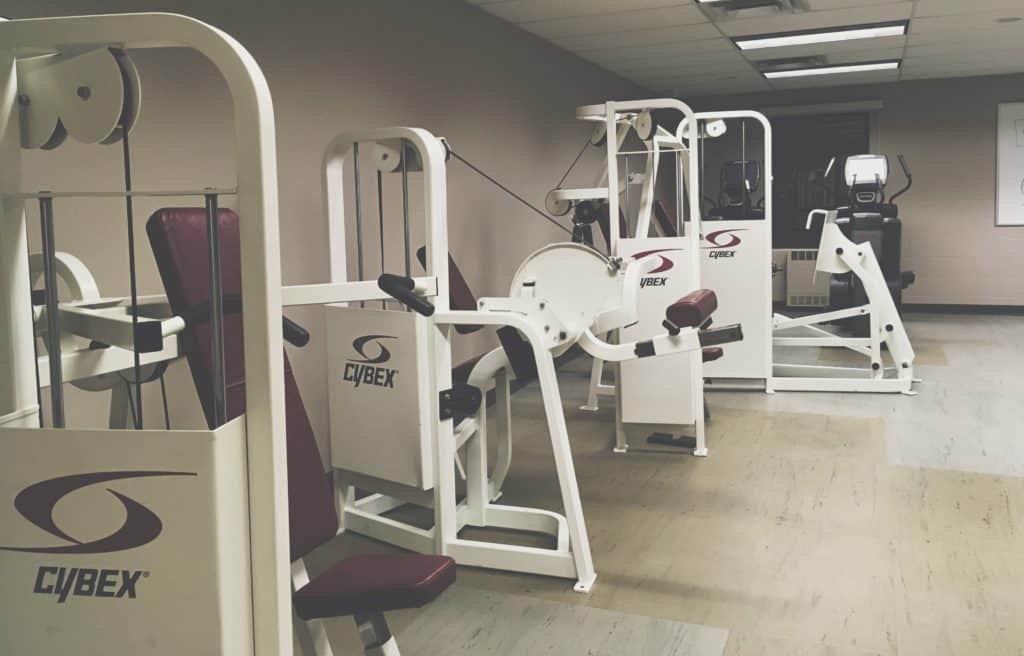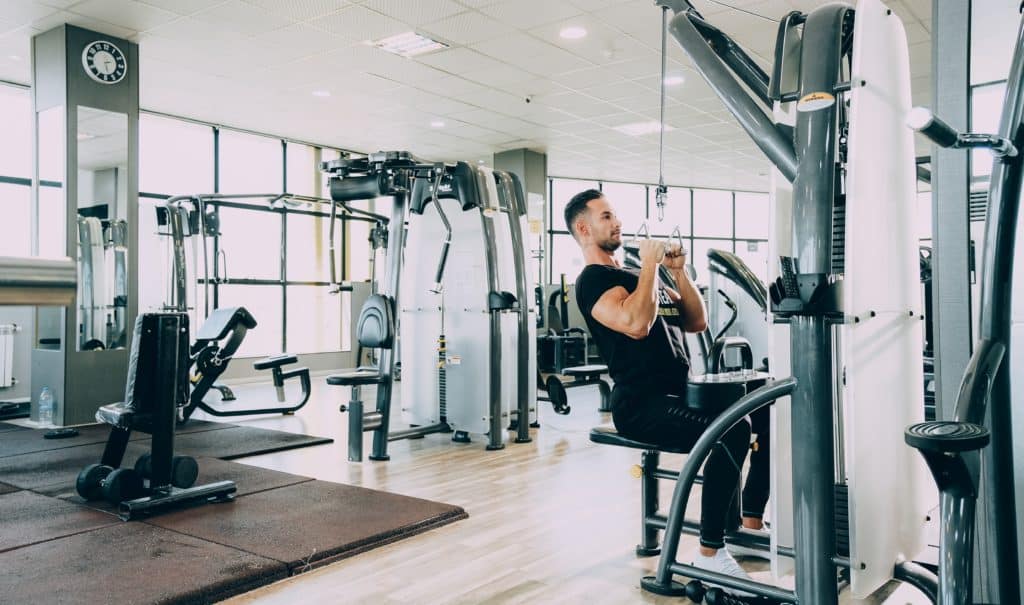
Bodybuilding can take on a pretentious tone when it comes to training styles. While many old school tactics hold merit when it comes to building muscle, there are still many roads to success.
The prevailing wisdom states that you have to use free weights to build muscle, rather than machines. Free weights are considered more challenging, since they force the lifter to use balance and coordination, instead of just performing a machine exercise on a fixed plane of motion.
To determine the effectiveness of gym machines compared to free weights, it’s important to understand how muscle is built in the first place.
Muscle growth is dependent on multiple factors, each with a varying level of importance. Everything matters, but certain things matter more than others.
In this hierarchy, the overarching variable that determines how much muscle you can build is mechanical tension. Mechanical tension is the load placed on the muscle. It is not necessarily pure heavy weight or resistance like maxing out on the bench press; it could be adequate resistance with a number of reps.
Part of mechanical tension is range of motion. Muscle growth occurs at a higher rate through a full range of motion. You can conceivably grow only a portion of the muscle if the range of motion is limited. This is why some experts are not advocates of partial reps.
The next important factor is workout volume. Volume is the total number of working sets per muscle group performed in a workout. A working set is anything that isn’t a warm up, meaning the resistance is enough to be considered challenging for that particular set.
For hypertrophy (muscle growth), the number of reps matters, but not as much as once thought. The old school idea of the hypertrophy range being 8-12 reps per set has been disproven, and is more like 5-30 reps. The number one key with workout volume is simply making sure each set, so long as it fits within that wide range of reps, is intense enough to fatigue the muscle.
Other variables that may offer minimal muscle growth include metabolic stress and muscle damage. Metabolic stress accumulates during vigorous workouts, often described as “the burn” from lactic acid accumulation. Muscle damage is described as the soreness that occurs in the days following a workout.
With all that, what you won’t notice is any mention of resistance training modalities. There is nothing is the muscle building research literature that specifies that the resistance has to come from dumbbells or barbells.
There is separate research that compares muscle growth between free weights and machines with all these variables like workout programming being equal. But it’s first important to define what is considered a machine in the gym.
Some machines are obvious, like the Nautilus or Hammer Strength machines found in most gyms. But when research compares free weights vs. machines, it typically groups in the cam pulley systems as well. On the pulley you can change attachments and perform a variety of movements. Some of the attachments include ropes, individual handles, and ez curl bars.
A study in the Journal of Strength and Conditioning Research found similar muscle growth between a group training exclusively with machines versus a group training exclusively with free weights.
The study also measured strength, free testosterone, and cortisol between the groups. Results were similar aside from free testosterone, which increased in males who trained with free weights.
Other studies have compared machine training with free weights, and the consensus is that the metric most likely to change between the two workout styles is strength, but not muscle growth.
Study designs for exercise vary within the currently published research. There are differing opinions on the best way to format a study; from length, to measurements, to training status (using trained or untrained subjects).
Perhaps what’s more important than comparing the two training styles is that in most studies, resistance training solely with free weights and resistance training solely with machines both lead to significant increases in muscle mass.
In other words, whatever you choose to do will work, at least in the short term (i.e. whatever the length of the study was).
While it’s fun to compare training styles to determine what’s best, the truth is that balance in the routine is most optimal. A combination of free weights, machines, bodyweight exercises, and core training is the best way to develop a physique.

Free weights and machines challenge the muscle in their own unique way. As mentioned, mechanical tension on the muscle is the key to growth, so having variety in that tension is the best way to optimize it.
There may be individuals that, for one reason or another, cannot use free weights. It may be due to limitations of their body, lack of knowledge of free weights, or something completely different.
The information presented in this article is here to quell any fears about building muscle using machines. While it may not be the traditional or even optimal way of doing so, the research suggests that it is still an adequate method.
Is It Bad To Only Use Machines At The Gym
While it’s been determined that using gym machines can build muscle, the possibility of any potential downsides has to be taken into consideration.
When you predominately work out in one particular training style, odds are that you are sacrificing something in return. This is why cross training, or training using multiple modalities, is considered best. Each training method offers something unique that an alternative method may lack.
The one thing free weights offer which cannot be replicated in machines is instability. Instability may seem like a bad thing on paper, but in the context of muscle gain and strength development it is a good thing.
Some hypothesize that the unstable nature of free weights increases muscle fiber recruitment and, in the long run, more muscle mass development. Consider the example of a barbell squat compared to a smith machine squat. The smith machine is a fixed plane of motion; the bar glides up and down the apparatus perfectly. A barbell squat forces the user to stabilize the weight; it could wobble back and forth or side to side if moved improperly.
With that in mind, another concern is that overreliance on machines could leave these stabilizer muscles underdeveloped. Stabilizer muscles keep the body balanced while other muscles, called the prime movers, perform the majority of the actual movement. Stabilizer muscles play a large role in core development as well.
The risks associated with underdeveloped stabilizer muscles center around injury. In fact, many physical therapy clinics focus their injury recovery protocols on development of stabilizer muscles.
Obviously, it’s better to be proactive and strengthen these muscles now so that physical therapy is never needed.

Can You Get Ripped Using Only Machines
A common practice during fat loss phases is to change the style of workout from strength training to higher repetitions. In reality, resistance training workouts, no matter the style, don’t differ much in terms of overall calories burned.
In fact, resistance training is not considered to be a great method to burn calories in general. You will get a greater bang for your buck by simply eating less and, to a lesser extent, implementing cardio.
Lifting weights indirectly improves metabolism and carbohydrate tolerance by building muscle. Having more muscle increases resting metabolic rate. But the individual workouts themselves have a smaller acute impact on fat loss.
The purpose of resistance training during a cutting phase is to maintain as much muscle mass as possible, especially when dieting aggressively. Unless you are a beginner, you can’t expect to gain much muscle while in a calorie deficit. A good indication of muscle mass retention on a diet is if you don’t lose considerable strength.
You can’t expect to perform at your best when consuming fewer calories, but if you can push 80-90% of the weight you normally do then you’re probably in a good place.
With that said, using only machines will not inhibit a fat loss phase by any means. With energy lacking during a cut, many people gravitate toward machine exercises since they are typically easier. As mentioned muscle gain is rare when dieting, so importance falls on upholding mechanical tension and volume by any means.
